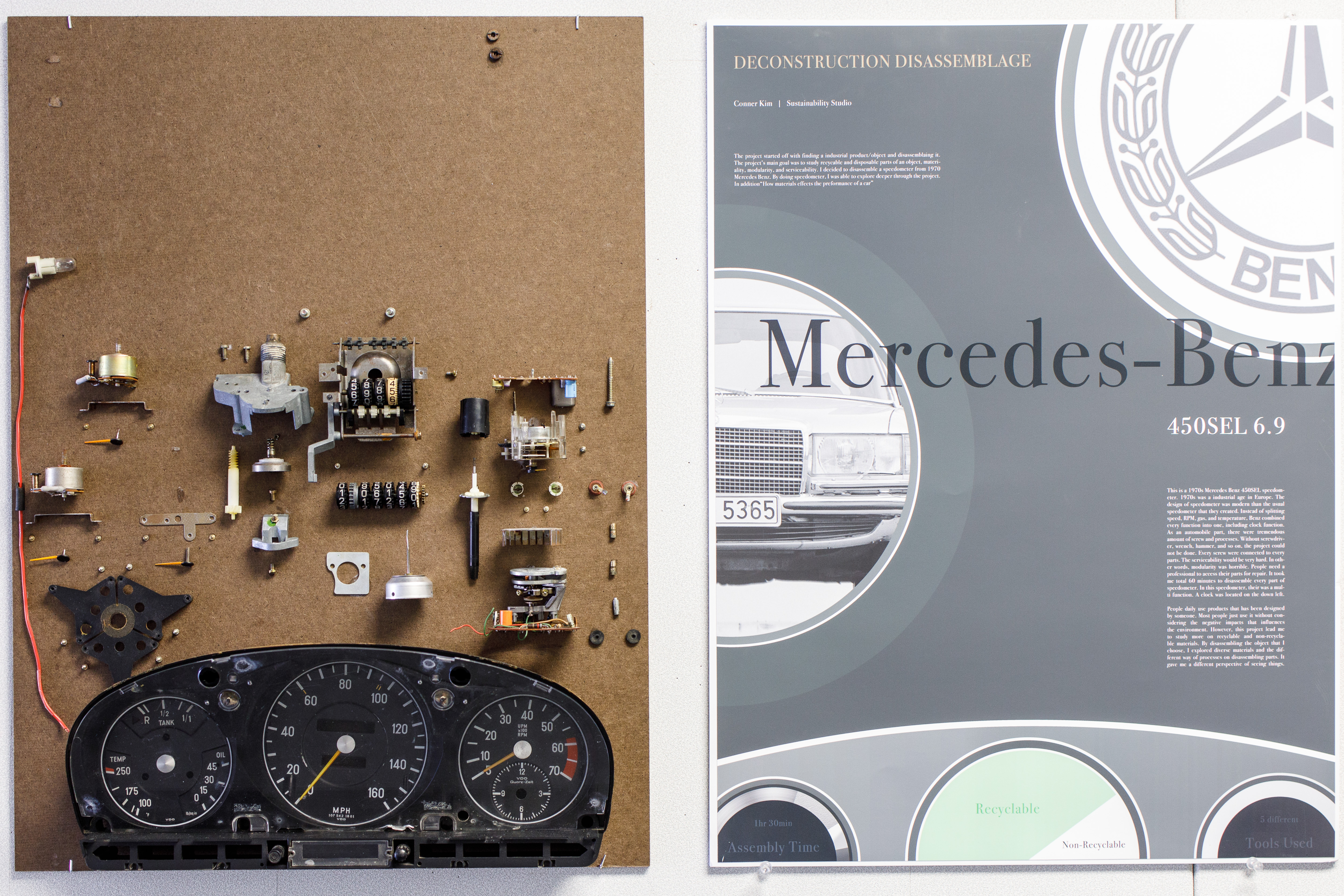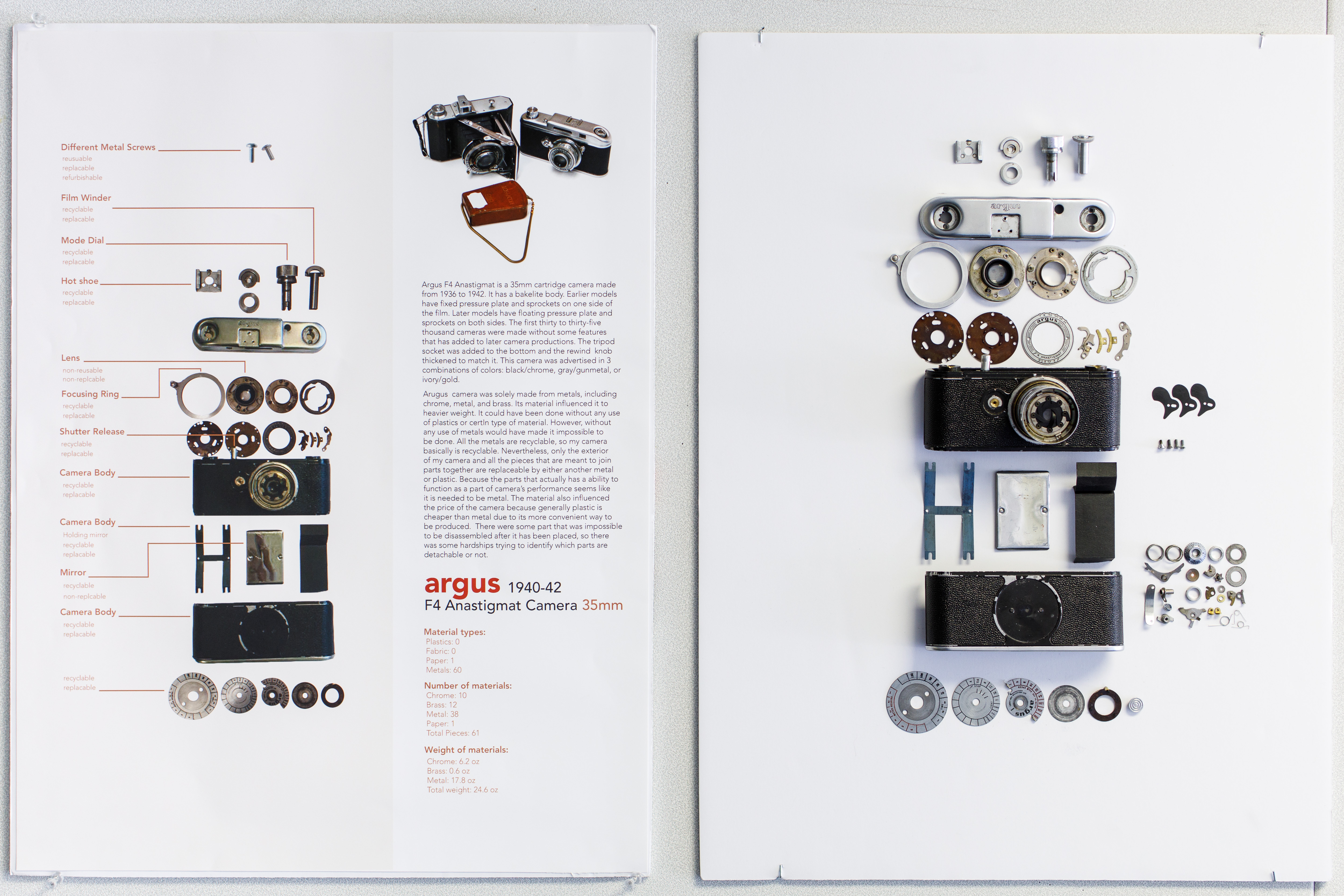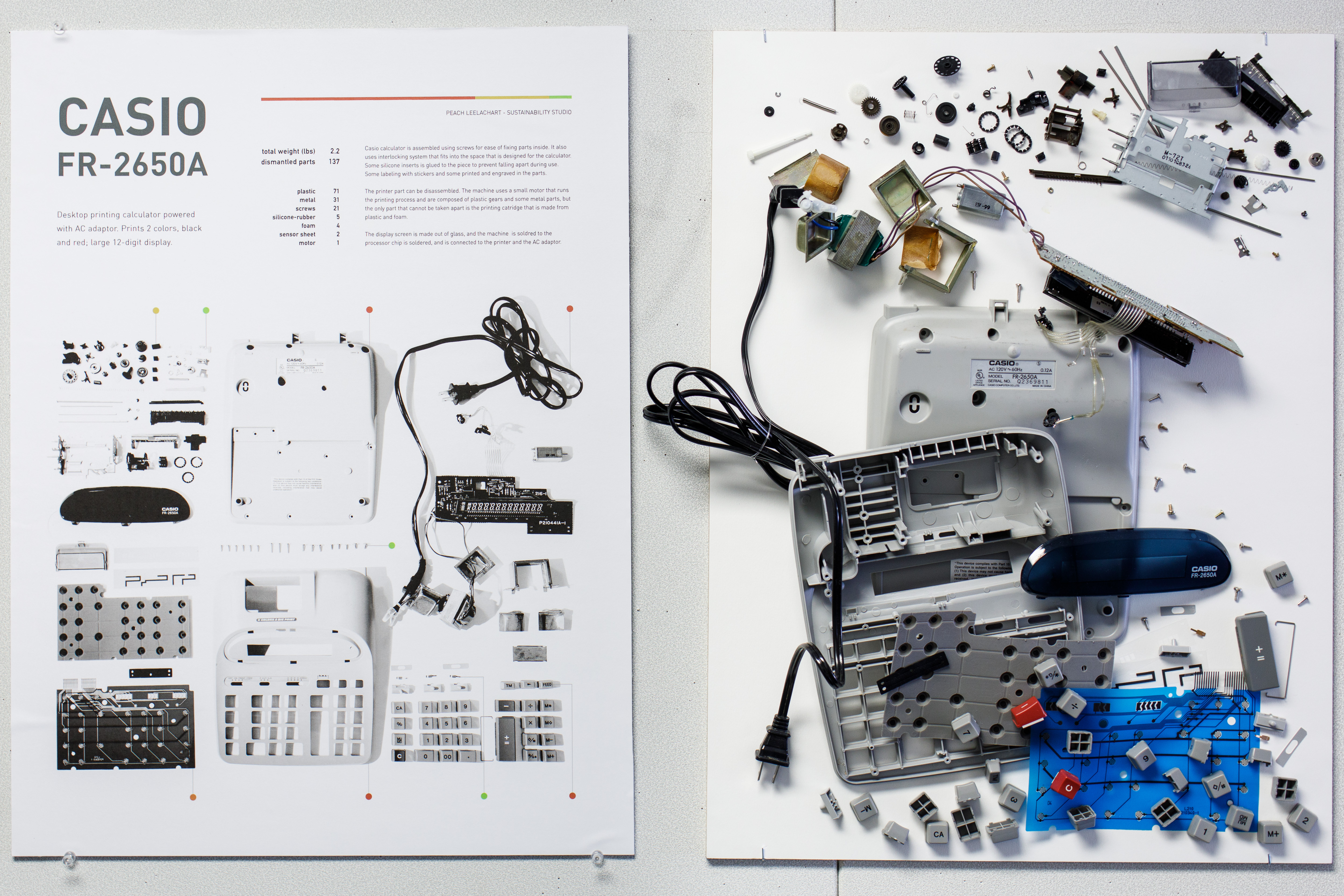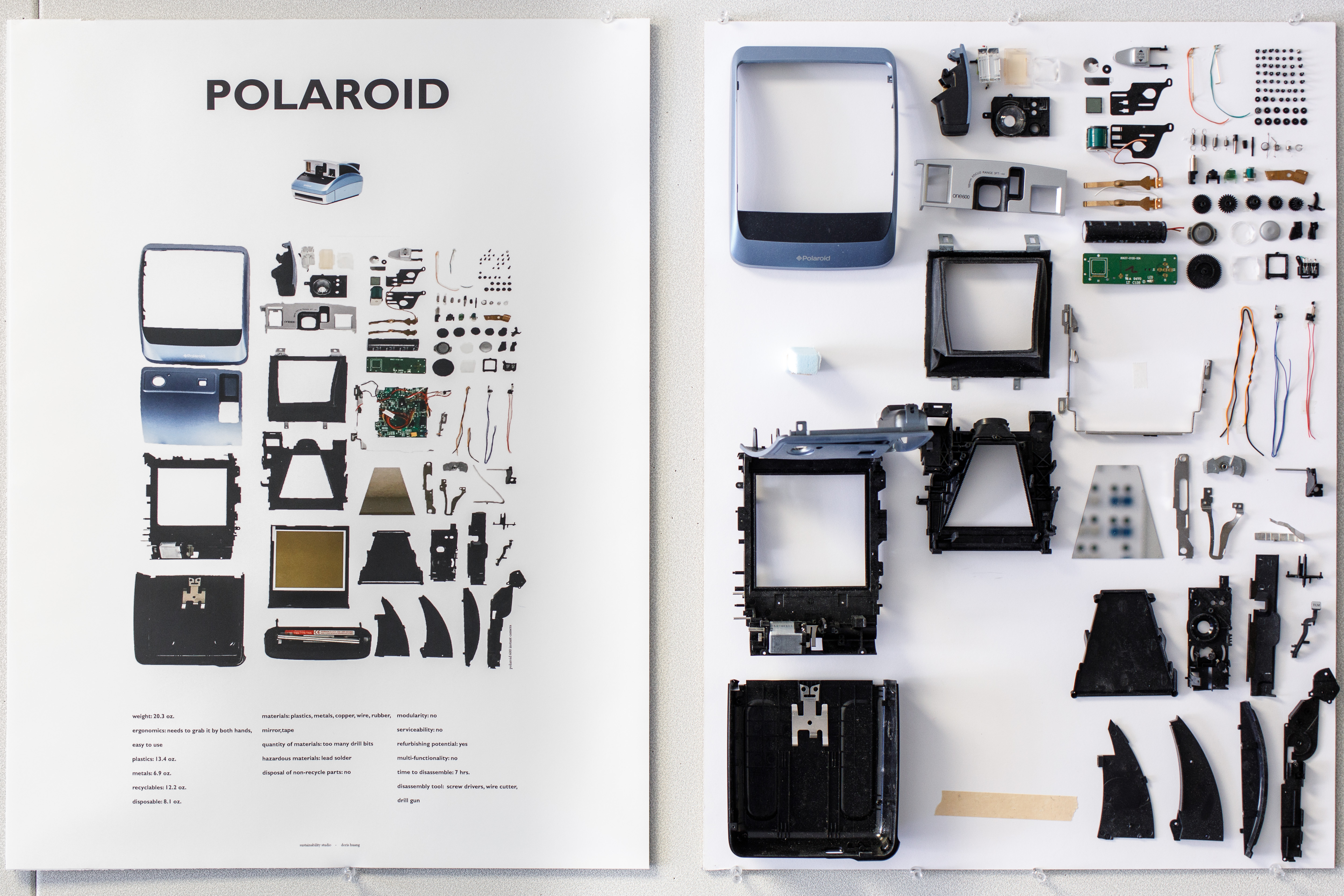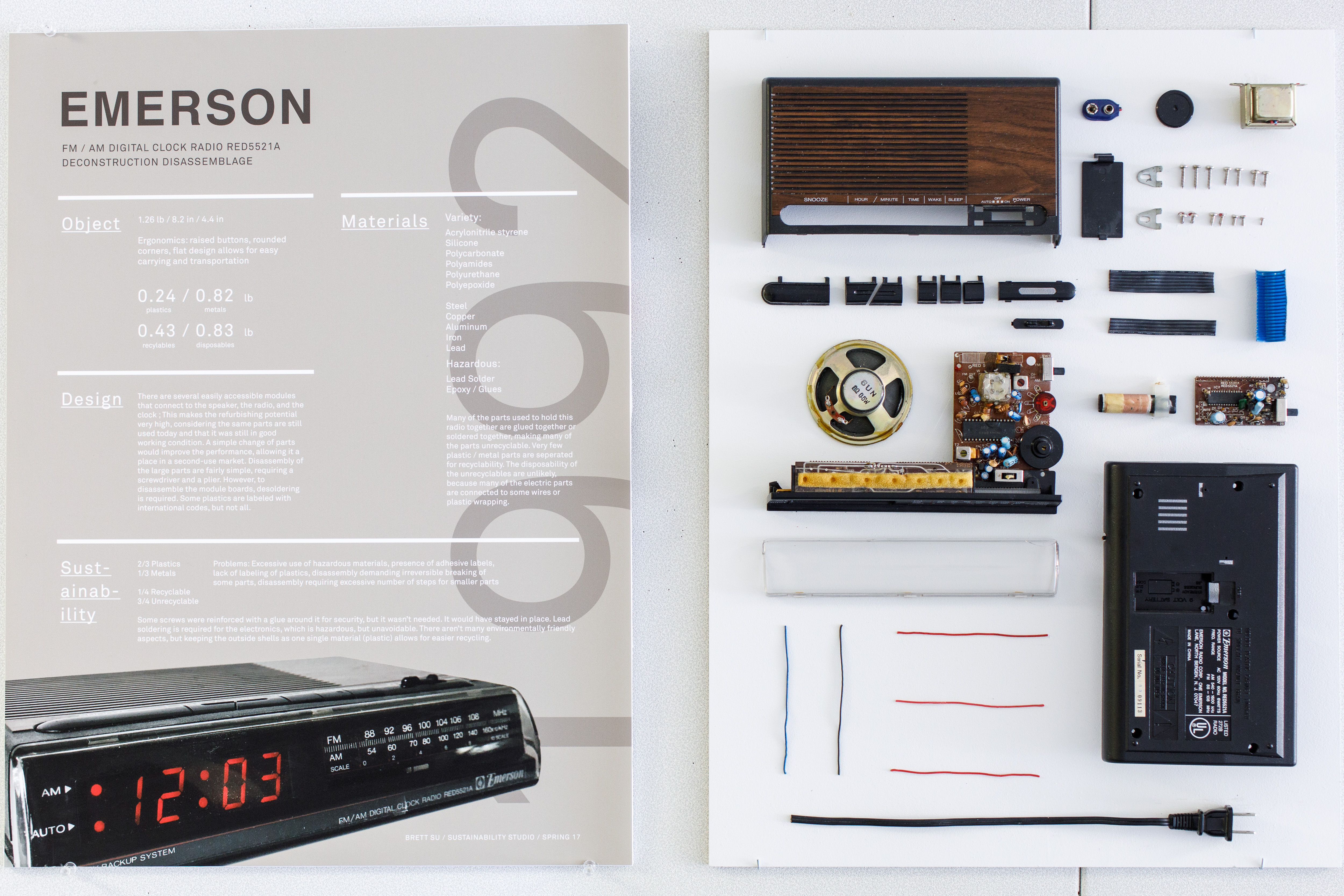
Exploring the Afterlife of a Product
Spatial Experience Design faculty member James Meraz assigned his fifth term, Sustainability Studio students, to deconstruct a product.
Sounds simple enough. But the real challenge came in the choosing: Each object had to represent a quintessential design for the particular era in which it was built. The project's goal was to reveal how good design transcends space and time and consistently reveals an intuitive order connecting a product’s component parts and materials and the means by which they’re assembled.
By participating in the deconstruction process, students gained insight into the sustainability of each product based on the recyclability of its materials and the labor involved in disassembling the product. Among its many long-term benefits, this exercise has the potential to influence the way these students approach design thinking by incorporating consideration of the life cycle beyond the obsolescence of the product into the recycling and upcycling phases. In the short term, these projects reveal the unforeseen inner beauty of a Polaroid camera or a clock radio.
Where art & design education meets social change
